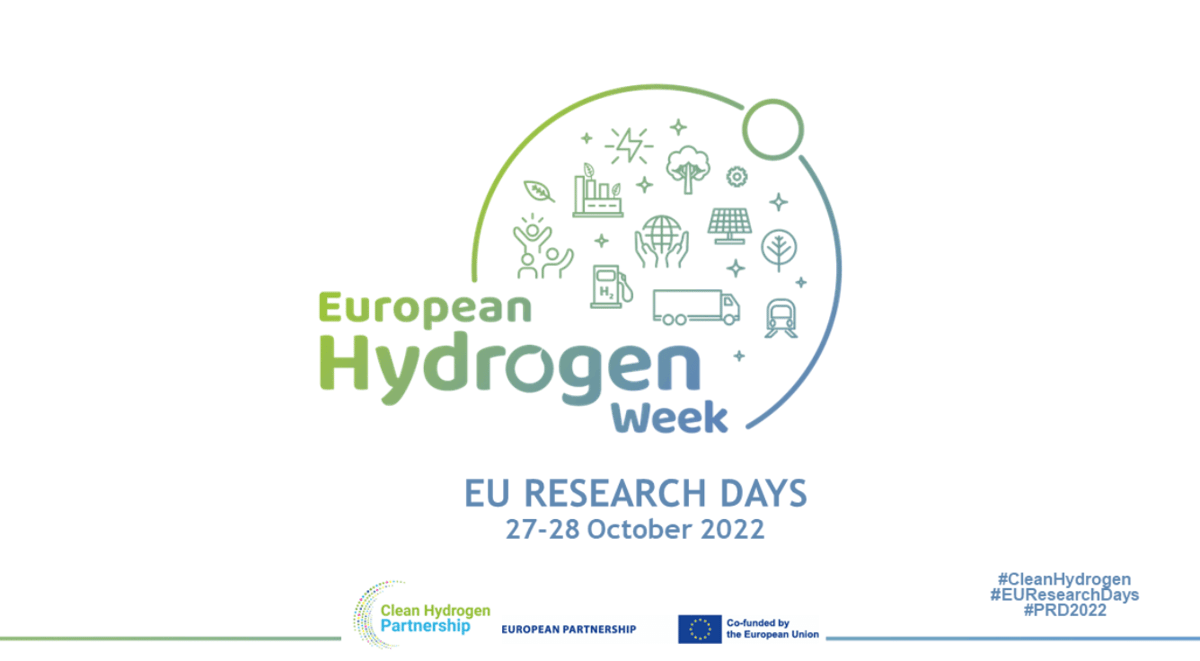Assessing The Viability Of Hydrogen And Battery Buses In Europe

Table of Contents
H2: Battery Electric Buses: The Current Market Leader
Battery electric buses (BEBs) are currently dominating the zero-emission bus market in Europe. Their widespread adoption is driven by several key factors.
H3: Advantages of Battery Electric Buses:
- Lower Upfront Cost: BEBs generally have a lower initial purchase price compared to hydrogen buses, making them more accessible for many municipalities with tighter budgets. This lower cost of entry is a significant factor in their current market dominance.
- Established Charging Infrastructure: Many European cities are already investing in and deploying electric vehicle charging infrastructure, providing a readily available network for BEBs. This existing infrastructure reduces the initial investment needed to operate a fleet of electric buses.
- Rapid Technological Advancements: Battery technology is rapidly evolving, leading to increased range, faster charging times, and improved energy efficiency. This continuous improvement makes BEBs an increasingly attractive option.
- Reduced Operational Costs: BEBs typically boast lower running costs due to lower energy consumption per mile compared to diesel buses, translating into significant long-term savings for operators.
- Quieter Operation: The near-silent operation of BEBs contributes to a more pleasant urban environment, reducing noise pollution compared to both diesel and hydrogen buses.
- Wide Model Availability: Numerous manufacturers offer a variety of BEB models, ensuring competition and driving innovation in the market.
- Government Incentives: Many European governments offer substantial incentives and subsidies to encourage the adoption of BEBs, making them even more financially attractive.
H3: Disadvantages of Battery Electric Buses:
- Limited Range: Compared to hydrogen buses, BEBs typically have a more limited range, requiring more frequent charging and potentially impacting operational flexibility, especially for longer routes.
- Battery Lifespan and Replacement: Battery lifespan and the associated replacement costs constitute a significant long-term expense. The cost and environmental impact of battery disposal must also be carefully considered.
- Renewable Energy Dependency: To maximize the environmental benefits of BEBs, the electricity used to charge them must be generated from renewable sources. Reliance on fossil fuel-generated electricity negates the positive environmental impact.
- Battery Weight: The substantial weight of the batteries can negatively affect the overall fuel efficiency and potentially reduce the lifespan of other vehicle components.
- Charging Infrastructure Investment: Deploying sufficient charging infrastructure for large fleets of BEBs requires significant upfront investment, which can be a barrier for some cities.
- Environmental Impact of Battery Production: The extraction of raw materials for battery production raises environmental concerns related to mining and the use of rare earth minerals.
H2: Hydrogen Buses: A Promising but Emerging Technology
Hydrogen fuel cell buses (HFCBs) represent a potentially powerful alternative to BEBs, particularly for specific applications. However, their wider adoption faces significant challenges.
H3: Advantages of Hydrogen Buses:
- Longer Range: HFCBs offer a significantly longer range than BEBs, reducing the frequency of refueling stops and improving operational flexibility, especially for longer routes and those outside city centers.
- Faster Refueling: Refueling a hydrogen bus is considerably faster than charging an electric bus, minimizing downtime and increasing operational efficiency.
- Renewable Hydrogen Potential: Hydrogen can be produced from renewable sources (green hydrogen) using electrolysis powered by renewable energy, resulting in zero tailpipe emissions and a reduced carbon footprint.
- Reduced Reliance on Critical Materials: Hydrogen fuel cell technology relies on less critical materials compared to battery production, mitigating supply chain risks and environmental concerns associated with rare earth mineral mining.
- Significant Emission Reduction: HFCBs offer the potential for a significant reduction in tailpipe emissions, contributing to improved air quality in urban areas.
- Suitability for Longer Routes: The extended range of HFCBs makes them ideal for longer routes and operations outside densely populated city centers.
H3: Disadvantages of Hydrogen Buses:
- Higher Upfront Cost: The initial investment for HFCBs is significantly higher than for BEBs, making them less financially accessible in the short term.
- Lack of Refueling Infrastructure: The absence of a widespread hydrogen refueling infrastructure across Europe represents a major obstacle to HFCB adoption.
- Hydrogen Production and Storage: The production, storage, and transportation of hydrogen present significant logistical challenges and require substantial investment.
- Energy Efficiency of Hydrogen Production: The energy efficiency of the hydrogen production process is crucial. "Grey" hydrogen produced from fossil fuels negates environmental benefits, making "green" hydrogen production essential.
- Safety Concerns: Safety concerns related to hydrogen storage, transportation, and handling need careful consideration and robust safety protocols.
- Technological Immaturity: Hydrogen fuel cell technology is relatively less mature compared to battery electric technology, requiring further research and development.
H2: Infrastructure Requirements and Policy Considerations:
The successful deployment of both BEBs and HFCBs hinges on adequate infrastructure and supportive policies.
H3: Charging Infrastructure for Battery Electric Buses: Developing a comprehensive and reliable charging infrastructure for BEBs requires significant investment. Strategic placement of charging stations, consideration of grid capacity, and cost-effective solutions are crucial for widespread adoption.
H3: Hydrogen Refueling Infrastructure for Hydrogen Buses: Building a nationwide hydrogen refueling network presents a monumental challenge. The cost of establishing and maintaining this infrastructure, along with safety regulations and logistical considerations, are significant hurdles.
H3: Policy Support and Incentives: Government policies, subsidies, and regulations play a pivotal role in encouraging the adoption of both BEBs and HFCBs. Incentives that address upfront costs, infrastructure development, and operational support are crucial for market penetration.
H3: Lifecycle Assessment and Environmental Impact: A comprehensive lifecycle assessment is necessary to compare the total environmental impact of BEBs and HFCBs. This assessment should consider factors such as emissions from manufacturing, operation, and end-of-life disposal.
3. Conclusion:
Both hydrogen and battery electric buses offer viable pathways towards decarbonizing public transport in Europe. However, the optimal choice depends on various factors including route length, operational requirements, and the availability of supporting infrastructure. While battery electric buses currently enjoy a market advantage due to lower costs and existing infrastructure, hydrogen buses represent a strong potential solution for long-range routes and areas where establishing extensive charging networks proves challenging. Further investment in research, development, and supportive policies is crucial to unlock the full potential of both hydrogen and battery electric buses, accelerating their widespread adoption and ensuring a sustainable future for public transport across Europe. The future of sustainable public transport relies on continued innovation and strategic investment in both hydrogen and battery electric bus technologies.

Featured Posts
-
 A European Netflix Assessing Macrons Progress And Future Prospects
May 07, 2025
A European Netflix Assessing Macrons Progress And Future Prospects
May 07, 2025 -
 Xrp Up 400 In 3 Months Should You Invest Now
May 07, 2025
Xrp Up 400 In 3 Months Should You Invest Now
May 07, 2025 -
 Svetovy Pohar Hokeja 2028 Nhl Oficialne Potvrdzuje
May 07, 2025
Svetovy Pohar Hokeja 2028 Nhl Oficialne Potvrdzuje
May 07, 2025 -
 Two Year Hiatus Ends Lewis Capaldis Mental Health Charity Gig
May 07, 2025
Two Year Hiatus Ends Lewis Capaldis Mental Health Charity Gig
May 07, 2025 -
 Understanding The Conclave Electing The Head Of The Catholic Church
May 07, 2025
Understanding The Conclave Electing The Head Of The Catholic Church
May 07, 2025
Latest Posts
-
 Cantina Canalla El Mejor Restaurante Mexicano De Malaga
May 08, 2025
Cantina Canalla El Mejor Restaurante Mexicano De Malaga
May 08, 2025 -
 David Dodge Raising Productivity Must Be Carneys Top Priority
May 08, 2025
David Dodge Raising Productivity Must Be Carneys Top Priority
May 08, 2025 -
 Rogues Legacy Gambits Emotional New Weapon
May 08, 2025
Rogues Legacy Gambits Emotional New Weapon
May 08, 2025 -
 Andor Season 2 A Rogue One Star Reveals A Star Wars Rewriting
May 08, 2025
Andor Season 2 A Rogue One Star Reveals A Star Wars Rewriting
May 08, 2025 -
 Restaurante Mexicano Malaga Descubre Cantina Canalla
May 08, 2025
Restaurante Mexicano Malaga Descubre Cantina Canalla
May 08, 2025
